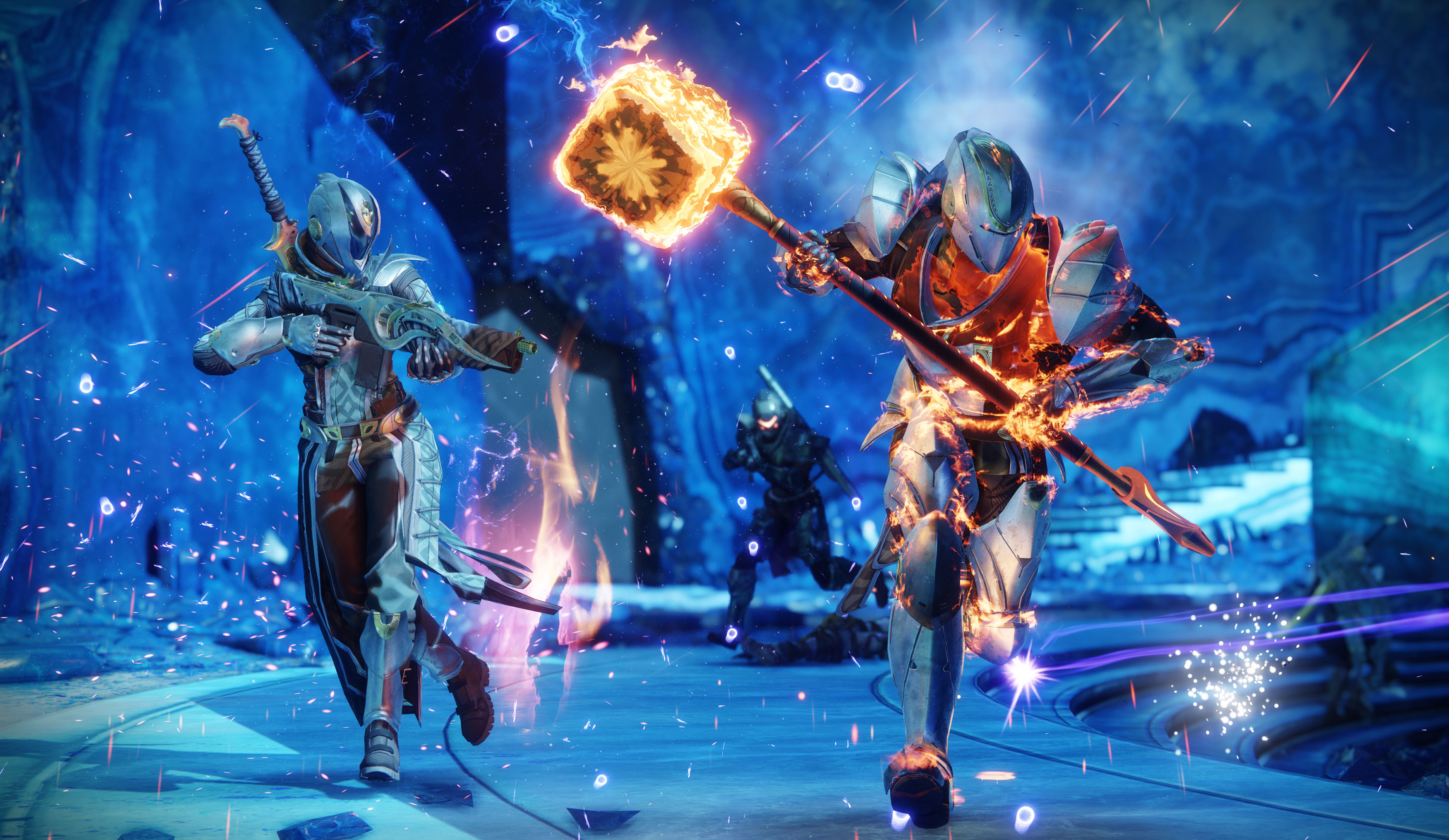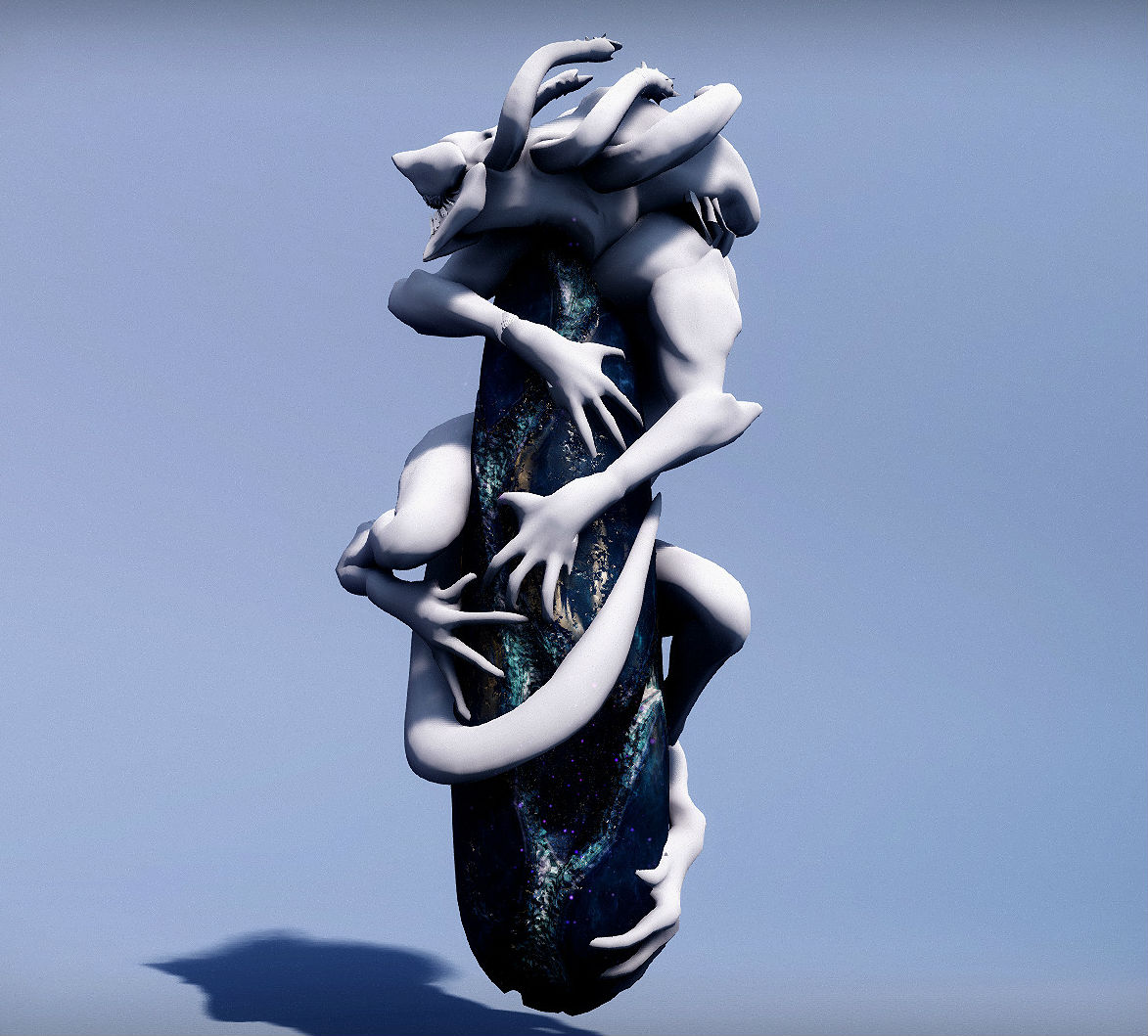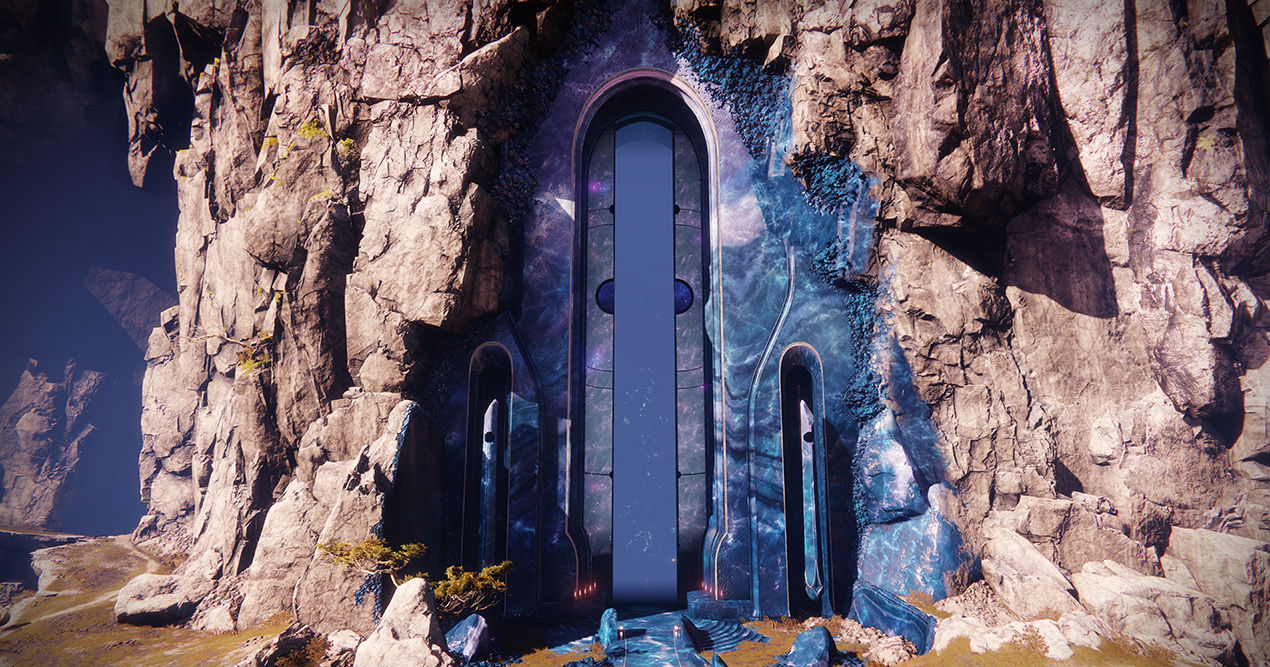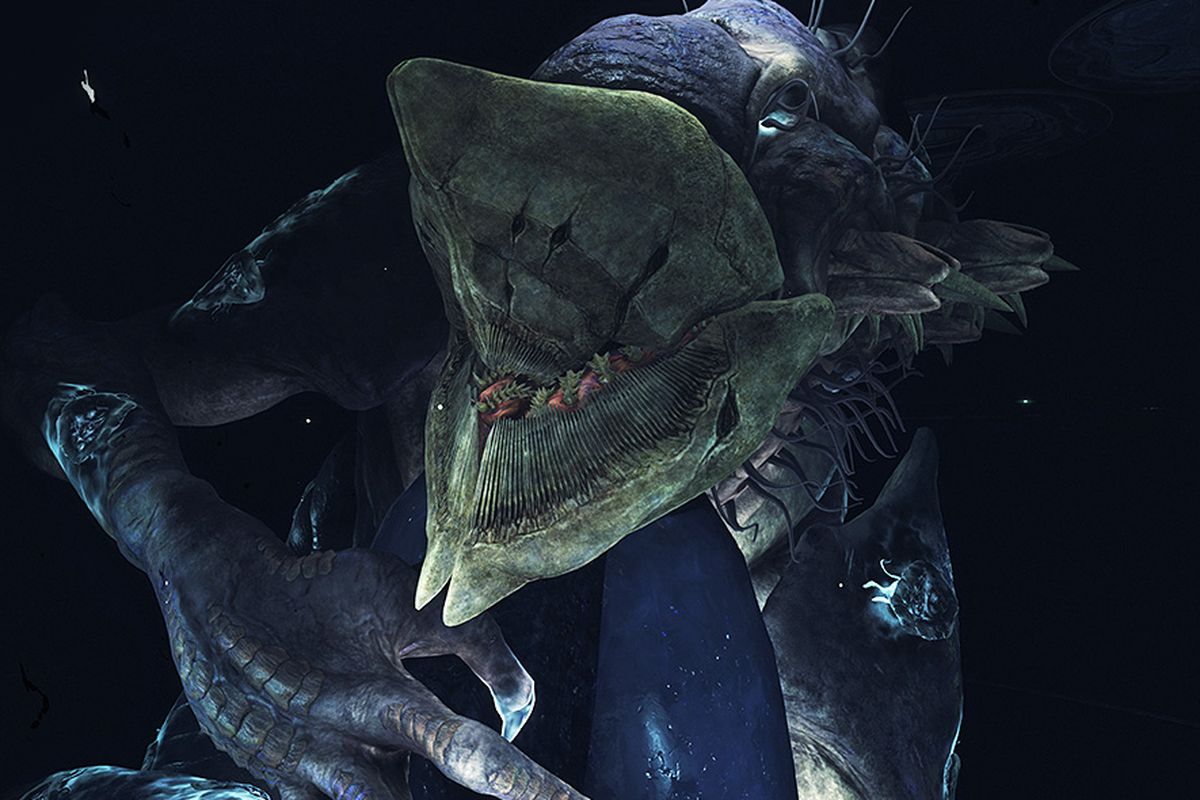
Even in the darkest times, one thing the Destiny community could always rally around was the brilliance of the raid design. Each raid is built to kick the asses of teams who venture inside, until eventually they master baffling mechanics, overcame a boss with a health bar the size of a surfboard, and emerge exhausted but triumphant. The inspiration for these epic dungeons comes from MMORPGs but, when shrunk to fit Destiny's six-person fireteams, the experience becomes a combination of puzzling, platforming, and endgame-level enemies. It's unlike anything found in other first-person shooters. Trying to manage esoteric callouts—"Who's on triple booby snake?"— while also maintaining an upbeat mood among a group of randos from an LFG site is… Well, not CoD.

Bungie's raid team lead
So why put yourself through the stress? Because the environments and encounters tend to be the finest work that Bungie's designers are capable of—eerie, grandiose, and deliciously alien. And with a few notable exceptions (hello, Zaouli's Bane), the loot is usually worth the struggle—provided RNG is on your side. Destiny 2 is currently enjoying a major renaissance with the Forsaken expansion, and part of that is thanks to Last Wish, the biggest raid Bungie has built to date. It takes place in The Dreaming City, which looks like a cross between a High Elf sanctuary and a '70s prog rock cover. Here, the guardians must hunt Riven, the last of a race of wish-granting dragons.
I've beaten the raid seven times now, after initially getting stuck on the last boss until 3.30am. I've also had the raid exotic fusion rifle, One Thousand Voices, drop for me twice, much to the increasing annoyance of my teammates. After all, who wouldn't covet a gun whose main perk reads: "Charging this weapon unleashes a giant continuous beam of death." So I was eager to speak with Joe Blackburn, raid team lead at Bungie, and pick his considerable brains about the past, present and future of Destiny raiding. Also on the call were game director Steve Cotton and project lead Scott Taylor, there to field more general questions and ensure Blackburn didn't reveal whether one of the chests at the end contains a guaranteed exotic drop. More on that later, but as with any good raid, let's start at the beginning.
Obvious mild spoilers warning for the Last Wish raid
GamesRadar+: What are the first phases of coming up with a new raid, its theme and individual encounters?
JB: We have a series of very early meetings where we take everyone involved in raids, put them in a room, and start coming up with what we call experience statements. These are the moments that drive what we want the raid to be about, or what we want a specific encounter to be about. So when we talk about encounters, people will say something like: "What if we made an encounter and the experience was 'the hunter becomes the hunted'?" and that’s sort of where the Gardens [also known as 'dogs' in the Leviathan raid] came from. Or: "You’re going to play hide and seek and then halfway through you’re going to switch roles." We put a bunch of these on the board, with everything from "I want to do something that feels like I’m playing Killer Queen" to "I want to do something that feels like I’m playing tag", and we pick the ones we feel the most passionate about as the driving principles for our encounters.
Here's something I read on your Twitter that stuck with me: "A very smart designer once told me people want a raid to last twenty hours the first time and twenty minutes every time after that" and you said you hadn’t slept since. How do you tackle that problem of making something that's initially so complex that it seems like normal players will never be able to cope, but in a couple of weeks they have it down pat?
Sign up to the GamesRadar+ Newsletter
Weekly digests, tales from the communities you love, and more

Riven is easily Destiny's most impressive raid boss to date. The picture above is early concept art of her wrapped around a giant egg perch. Black burn says her huge size wasn't designed to be a response to the disappointment fans felt when they saw the Xol, the Worm God, the big bad in the Warmind DLC which sadly looked a bit like a mouldy cigar. "No. I think Riven was more of a response from when we made Oryx," says Blackburn. "Players felt like they didn’t have much interaction with this giant creature. So we were like 'OK, we need to put the players really close and have the monster interact and not feel like it’s sort of a puppet on a train ride.' We tried to do as much as possible to make Riven feel alive and massive but also having her own will. From the start we knew that we wanted to kill a giant boss, something amazing, and take its heart out of the raid."
JB: We talk a lot about mastery and how individuals can develop it over a specific experience. We look at a lot of games, like even old school Mario. The first time you do a level, the Goomba gets you. But you soon learn the Goomba comes from the same spot, and you never get got by that Goomba again, right? Dark Souls does a great job of this too. Taking that sort of approach to mastery with our level design, we look at a lot of raid encounters where we’re going to throw a challenge at you, and the first time it seems daunting, but it has enough predictability that once you’ve mastered it, it’s easy for you to digest the information and pass it on to others.
What was your over/under on the number of hours that the world’s first team to beat Last Wish would take?
JB: We always go into a raid thinking there’s nothing that we’re going to throw at people that they’re not going to get within 24 hours, so this was our first "Oh, okay—we came close this time!" Really early on we knew what we wanted to do for this one was to make your power matter.
So having Steve and Scott get on board really early and say "Instead of people being 20 over the power level, what if they were 20-25 under power? Could we do that? And what would fighting Riven feel like when you’re 27 power under?" So we knew it was going to be longer this time, and I think we were happy with what we’d built. They probably took longer than we thought—the fatigue set in at some point. [Laughs]

SC: They ran a little longer than we were targeting, but I think what Joe was saying earlier—to your question about how do you make it take 20 hours the first time, and then 20 minutes the tenth time—power does play into that. I mean, if you can start people underpowered, then they can always improve their power and become more capable. That's one axis that we can use to make sure that the raid is easier on subsequent attempts. But most of it has to be about the mastery, it has to be about the mechanics, because you can get better at those. Or you learn the shortcuts and how to cheese the encounters—either way, that’s how you get to the point where now you can go in with a group and maybe Sherpa somebody through and it can be more rewarding quicker.
We’d already made them fuzzy, and then we were going to hit them with Riven for a knockout punch
—Joe Blackburn
What was the atmosphere like in the studio when you were hanging out in your conference room watching the streams play out?
JB: In the morning, if you’d talked to us we thought we were in for pretty standard fare. Even under-levelled, if you watched the first couple of encounters, it looked like it was going to be wrapped up somewhere around four or five o'clock. Steve was sending me messages like "What happens if it goes after six? What’s our plan?" because several of us needed to stay late to flip on a bunch of stuff for The Dreaming City. Foolishly, I said: "Steve, they’re already trouncing through the encounters… later than 6? You’re crazy!"
SC: And I was like "OK, let’s have a backup plan just in case, because it could be 2am."

JB: Around the time the teams got to the Vault encounter, and it took so long to figure out, we definitely knew there was going to be a brain drain on players after they got through that. We’d already made them fuzzy, and then we were going to hit them with Riven for a sort of knockout punch. After about four hours in the Vault we were like "OK, this might go long…"
I went to bed around 2am when Datto's team were at Riven, and when I woke up the next morning they were still there. In the end they missed out on the emblem for completing the raid in the first 24 hours by two minutes. Was there any discussion about giving it to them anyway?
JB: No. We gave that emblem a pre-set time and date—so we had this really concrete finish line that we don’t always have, and I think the story of them being two minutes late is going to live way longer than if they’d got the emblem.
SC: Yeah, that’s the stuff of legend.
I remember once hearing that Crota's End was the raid team's take on an action movie. What kind of movie would Last Wish be?
JB: Really early on, we looked at Last Wish as sort of the Greatest Hits album of raids. We’d just come off doing Leviathan which was our attempt at "Hey, let’s do something that changes every week!" It was also: "Let’s do a weird thing where you can take shortcuts!" We had a lot of learnings from that, and all the way back to [Destiny's first raid] Vault of Glass. Our weird way of innovating with Last Wish was to say "Let’s do this straight through bunch-of-bosses raid, and let’s take all the learnings we have and put them together." So our innovation is actually looking back and perfecting the formula.
Did you also take inspiration from Warmind's Escalation Protocol mode? The encounter with Shuro Chi has that whole hectic, chaining supers together, six-person pyrotechnic mayhem thing going on.
JB: I think both Escalation Protocol and the Blind Well are hitting off the same feedback that we hear a lot of from players, and that’s that Destiny is a game about shooting aliens at its core, and we knew we wanted to make a bunch of beats in Last Wish that primarily were about shooting aliens and using your supers to get back to what makes Destiny feel so good and different from raiding in an MMO. So if you look at encounters like Shuro Chi, and the final encounter we refer to as 'The Escape', during which you carry Riven's heart out, they’re primarily about getting six people together and chaining supers and using heavy and getting that power fantasy that you can only find in Destiny.
On the next page: Bungie talks Wishing Wall, designing raid exotics, and what kind of cheese is unacceptable


